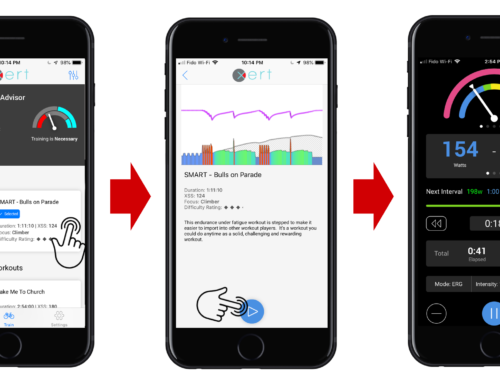During the initial setup, your account is automatically configured to a Continuous Improvement plan with a Rouleur Athlete Type. This setup is designed to provide flexibility and allow you to train effectively without needing to specify an athlete type right away. However, if your training goals change or if you’d like to tailor your training further, you can modify your Athlete Type at any time from the ‘PROGRAM‘ tab in your account settings.

Athlete Types and Their Focus
While the names of the athlete types are primarily geared toward road cycling, they can be applied to most endurance sports. Each athlete type focuses on different energy systems and training durations:
- Road Sprinter (2-min power) or Pursuiter (3-min power) are ideal if your goal is to maximize your sprint performance for events like road races.
- Puncheur (4-min power) or Breakaway Specialist (5-min power) are better suited for sports like cyclocross or mountain biking, where efforts of slightly longer durations are required.
- Rouleur (6-min power) or GC Specialist (8-min power) are designed for those targeting longer sustained efforts like time trials or hilly road races.
- Climber (10-min power) or Sprint Time-Trialist (20-min power) focuses on optimizing performance for longer sustained efforts.
Once you’ve selected the appropriate Athlete Type for your training goals, Xert will help you optimize your workouts accordingly.
Choosing Your Athlete Type Based on Your Goals
To help you decide which Athlete Type to select, you can start by reviewing data from an activity, race, or event similar to the one you aim to excel at. For example, if you’re preparing for a criterium, you could look at your Activity Details for a similar event to understand the demands it placed on your fitness.
IMPORTANT NOTE: When using Forecast AI training plans (Goal, Event, or Race), Xert will automatically select the appropriate Athlete Type for you.

Using Xert’s analysis, you’ll see the Focus Duration, Athlete Type, and Specificity Rating for the activity. These values summarize how the event challenged your three key fitness parameters, based on Work Allocation Ratios. If this activity matches the type of event you’re targeting, you can use it as a basis for selecting your Athlete Type. For example, if your focus duration aligns with Road Sprinter, this would be a good option for you to choose.
 Refine Your Athlete Type Selection Based on Your Strengths and Weaknesses
Refine Your Athlete Type Selection Based on Your Strengths and Weaknesses
To refine your Athlete Type selection, you can review your strengths and weaknesses using the Rankings page, which includes a spider chart. Here’s how to use this information:
- If the required Athlete Type for your event falls to the left of your strengths (indicating a shorter Focus Duration), you might want to select an Athlete Type that’s further left to “overcompensate” and target areas of weakness.
- If the required Athlete Type is to the right of your strengths (indicating a longer Focus Duration), you might want to choose an Athlete Type that’s one or two steps to the right. This approach will help you improve your aerobic fitness and build a more balanced profile.
For example, if your spider chart shows that you’re strong in Power Sprinter, but your target event requires Puncheur, you might choose Breakaway Specialist or Rouleur to focus on increasing your endurance and balance out your fitness profile.
Update Jan ’24: It’s important to note that while there are a variety of Athlete Types, events and races rarely fall neatly into categories on the extreme ends of the power-duration curve. For example, Power Sprinter and Century Rider/Triathlete types were removed due to their limited applicability. Most events require a more balanced set of capabilities, so selecting an Athlete Type that fits within a more moderate range will usually serve you best.




